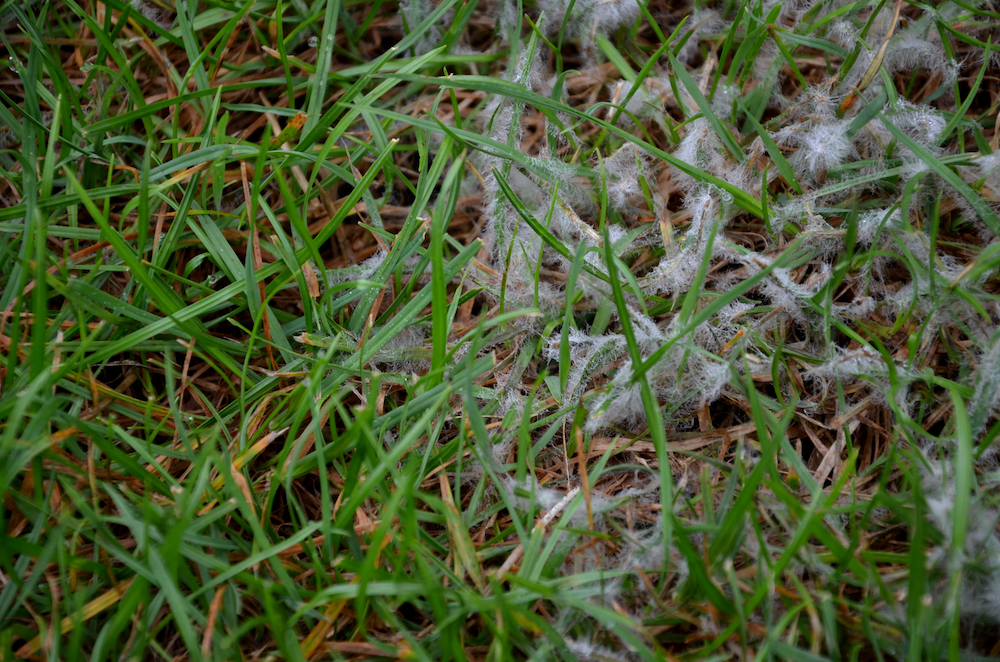Snow tends to blanket Southeast Michigan lawns for a good chunk of the winter, and unfortunately, so does snow mold. So when the snow finally melts in the spring, it can be a reveal to some degree — and what’s beneath this coverage is not always the healthy, green lawn you remember from fall.
One of the most unpleasant of these finds is circular patches of matted grass with a white or gray webbing, otherwise known as snow mold. Snow mold is a freeze-tolerant lawn fungus. It grows in cold, snowy conditions. More specifically, it forms when snow or wet leaves remain on a lawn for too long. While remaining active throughout the winter months, it’s only visible in the springtime after the snow melts — meaning it has more time to go unnoticed and impact a lawn’s health.
While prevention is always the best option, there are steps you can take to treat it if it’s already in your yard. The route you take depends on the severity.
When The Mold is Relatively Minor…
When dealing with a minor infection, you can use a rake to lightly comb through the grass. Without causing damage to other areas of your lawn, this technique will help dry out the infected area. It also prevents further growth of the fungus. While this will help the lawn repair itself, overseeding can be performed on top of this step if there is a need to fill in any infected bare spots afterward.
When Snow Mold Is More Severe…
In the case of more severe outbreaks, professionals like Lush Lawn can apply a fungicide to counteract your lawn issue and curb future growth. These fungicides are most effective when applied in the fall. They’ll not only treat existing problems but will also protect against future snow mold growth. This helps prevent the recurrence of snow mold, saving you time and headaches in the long run.
Differentiating Between the Two Varieties
It’s important to note that there are two varieties: gray and pink. While both types are active underneath the snow, pink snow mold is more severe. It can invade and destroy grass crowns and roots, whereas gray snow mold tends to only damage the leaf blades of grass. As their names suggest, pink can be identified by its white-pinkish appearance and gray by its white-grayish look.
Lush Lawn Can Help
At Lush Lawn, we are proud to help Southeast Michigan homeowners keep their lawn free of damaging diseases — a list that includes snow mold. We’ll tailor our treatment plans to align with the severity of the infestation and work to make sure lawn disease issues are less likely to occur in the future. To learn more about our snow mold control and prevention services, contact your local Lush Lawn branch today.
